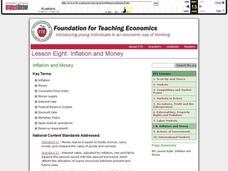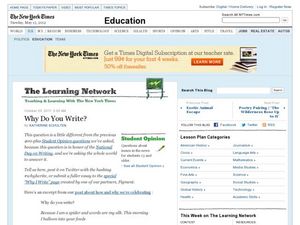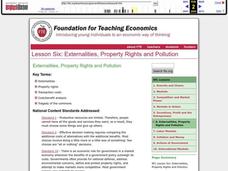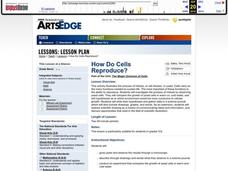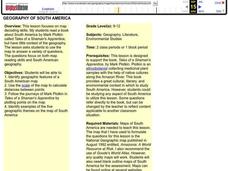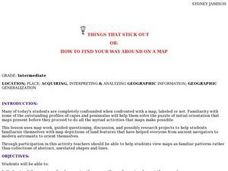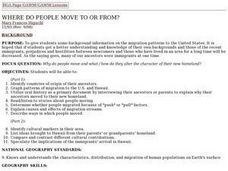Curated OER
Weather Watchers WebQuest
Students explore a variety of weather websites, and complete a Weather WebQuest worksheet. They read and analyze weather data, prepare a weather forecast and daily weather report, and predict the weather for the next two days.
Curated OER
Labor Markets
Students examine labor markets by participating in an employer/employee simulation and in group discussions. They discuss mandated employee benefits and predict the effect they have on various parties.
Curated OER
Ambassador Satch, Superb Entertainer: 1950-1971
Students participated in guided listening lessons of Louis Armstrong's jazz music while interpreting his lyrics. They study his life as an entertainer and goodwill ambassador for the US.
Curated OER
Inflation and Money
High schoolers examine the relationship between inflation and money. Defining key terms, they define money in terms of its functions and give examples of money. They discover what happens when inflation occurs unexpectedly. They also...
Curated OER
DNA Fingerprinting
Pupils discuss methods used by forensic scientists and the basics of DNA and how it can be used to identify an individual after reading an article from The New York Times.
Curated OER
Being the Boss: Entrepreneurship
Students describe the meaning of entrepreneurship and list three characteristics of entrepreneurship. They discuss the disadvantages and advantages of being an entrepreneur. They identify potential entrepreneurship opportunities in the...
Curated OER
Go Nuts with Peanuts
Young scholars learn about peanuts through online research. In this peanut lesson, students use provided links to research information on the origins of the peanut. Young scholars collect information about peanuts also called goobers.
Curated OER
Why Do You Write?
Ask your learners this question as a quickwrite: why do you write? This prompt can begin a unit on writing and open up a dialogue about the motivations writers have. Tap into your scholars' reasons for writing and make the activity more...
Curated OER
Externalities, Property Rights and Pollution
Students discuss the positive and negative externalities of various situations. They use the concept of property rights in discussing specific problems.
Curated OER
Memorializing September 11, 2001
Students use the Internet to research monuments. They design models of appropriate memorials which would honor the victims of the September 11, 2001 attacks on the World Trade Center in New York. They complete oral presentations that...
Curated OER
Externalities, Property Rights and Pollution
Learners identify the various externalities for any type of production. Using that information, they examine situations in which they are positive and negative. They discuss government efforts to protect the environment and humans. In...
Curated OER
How Do Cells Reproduce?
Beginning biologists prepare a sugar solution for yeast cells to live in, and divide it into two different jars. Samples from each jar are viewed with a microscope, and then one jar is placed in a warm environment and the other a cold...
Curated OER
Health Enhancement
Seventh graders play physical movement games to enhance their health and research Indian cultures. In this movement lesson plan, 7th graders research Indian movements and use them in physical activity.
Curated OER
Women's World Cup Champs
The Learning Network in conjunction with the New York Times provides an article for reading and questions for short answers and discussion. If you are looking for a rainy day activity or just a time-filler this story titled, "Women's...
Alabama Department of Archives and History
Booker T. Washington and W.E.B. DuBois
Where to begin? With the vocational education that provides the skills necessary to gain economic security or with a Liberal Arts education? As part of a study of leaders of the civil rights movement, class members compare and...
Curated OER
Geography of South America
Student's identify geographic features of a South American map. They use the scale of the map to calculate distances between points. They identify examples of the five geographic themes on the map of South America.
Curated OER
The Magic of Cranberries
Young scholars research climatic and soil conditions for growing cranberries and illustrate how cranberries grow. They research how cranberries are used past and present and create an a-b-c book on cranberries.
Curated OER
Things That Stick Out Or: How To Find Your Way Around on a Map
Students explain the meaning of and recognize the map outlines of a peninsula, an isthmus, and a cape.
Curated OER
Geography and our Family Favorites
Students talk with older family members about favorite family foods and where they have originated. They learn the process that went into the preparation and cooking of these foods and contrast how technology has affected food...
Curated OER
Pizza and the Economy
Young scholars become aware of the history behind pizza and how it was adapted to the economic and geographic conditions of the United States. They have a basic understanding of the concepts of supply and demand.
Curated OER
Tissue Paper Geography
Young scholars explore geographic features of the desert and apply their understanding of the topography of the desert by creating a tissue paper painting.
Curated OER
Creating Climographs
Students chart statistical information on graphs, interpret the information and use it to explain spatial relationships, and identify the relationship between climate and vegetation.
Curated OER
Cartographer on Assignment: Creating a Physical Map of Africa
Students use geographic information to make an outline map of Africa, then demonstrate their understanding of the physical landscape of Africa by using a variety of materials to create a physical map of Africa
Curated OER
Where Do People Move To Or From?
Students identify countries of origin of their ancestors, graph patterns of migration to the U.S. and Hawaii, then utilize oral history as a primary document by interviewing their ancestors or parents to explain why they moved to their...



